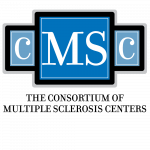Background: Magnetic resonance imaging (MRI) is a key part of the diagnosis and follow-up of people with multiple sclerosis (MS). However, the flexibility of MRI creates added variability in the images used for monitoring. To provide expert guidance, the Consortium of MS Centers (CMSC) created a task force to develop standardized MRI protocols useful to clinical practice. These protocols call for the inclusion of core structural sequences and outline minimum criteria for MRI acquisition.
Objectives: To assess the use of a standardized MRI protocol in an ongoing, pragmatic, multi-site MS clinical trial.
Methods: In the TRaditional versus Early Aggressive Therapy in Multiple Sclerosis (TREAT-MS) trial, eligible treatment-naive people with relapsing-remitting MS are enrolled, categorized as higher or lower risk of longer-term disability based on clinical and radiological presentation, then randomized in a 1:1 fashion to traditional or early aggressive treatment. As the study is pragmatic and MRIs are acquired as part of standard of care (SoC) activities, there are no set requirements for MRI acquisition. However, sites are encouraged to follow guidelines based on the CMSC standardized brain MRI protocol. For analysis, metadata from all MRI scans was extracted, including screening scans, which act as an initial baseline if recommended, repeat scanning was not ordered prior to treatment (N=935 scans; 497 subjects). Additionally, only three main structural contrasts were investigated: T1-weighted (T1-w), T2-weighted (T2-w), and T2-FLAIR.
Results: At enrollment, 10.0% of scans followed the CMSC guidelines for all three structural contrasts. However, after excluding the Johns Hopkins site, where repeat, CMSC-compliant imaging is frequently ordered, only 2.75% of these scans met the CMSC criteria. Many sites increased their use of CMSC-compliant protocols after subjects started treatment and study guidelines were encouraged; 53.4% of follow-up scans were fully compliant. Additionally, 72.2% of study scans were compliant for at least one of the three components. When scans did not follow CMSC guidelines, most often the site was unable to change the existing SoC protocol and/or patients were unable/unwilling to go to a center with compliant protocols. When images were not compliant, the most common reason was slice thickness (T2-w: 83.0%, T2-FLAIR: 84.8%, T1-w: 29.0%), followed closely by slice gap (T2-w: 76.2%, T2-FLAIR: 46.9%), with post-gadolinium imaging (12.0%) and missing 3D scans (70.8%) being primary reasons for noncompliance in T1-w images.
Conclusions: Despite the importance of standardization of high-quality MRIs for the monitoring of people with MS, adoption of recommended imaging remains low. However, through direct communication with imaging staff and practitioners in TREAT-MS, compliance increased by nearly 20-fold, indicating a real possibility for outreach, including to commonly used outpatient radiology facilities.
[learn_press_profile]
